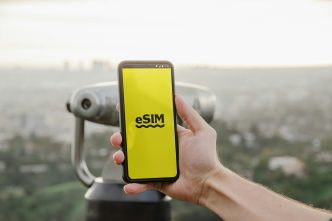When we think of green innovations or green tech, solar panels, wind turbines, carbon capture technologies, and electric cars often come to mind. These technologies are considered transformative and play a crucial role in advancing sustainability. However, in the realm of connectivity, eSIM technology is a true game-changer.
SIM cards have been ubiquitous for decades, required by virtually every mobile connectivity device, including mobile phones, tablets, and even connected cars. Despite their decreasing size over the years, traditional SIM cards present significant environmental challenges throughout their entire product lifecycle, from production, transport, usage, and disposal phases. Made from mined minerals and plastic, and distributed through a complex logistical network, each time a user switches network providers, purchases a travel SIM to stay connected abroad, or replaces a lost or degraded card, it contributes to the overall carbon footprint of the SIM card industry.
In contrast, the production lifecycle of an eSIM is streamlined, leading to a much lower overall environmental impact. Producing a single eSIM emits 46 percent less CO2 compared to a physical SIM card. eSIM capabilities are also integrated directly into a device’s hardware, eliminating disposability and single-use limitations. Through Remote SIM Provisioning (RSP), eSIM users can switch networks or activate services without needing to physically purchase or replace anything.
It’s entirely digital, eliminating the need for energy-intensive manufacturing, the physical components like metals and plastics used in products and packaging, and the logistical burdens of global and last-mile distribution.
For international travel, tourists can digitally purchase travel eSIMs from their chosen providers. Most providers also offer options with regional coverage. A Europe eSIM, for instance, would essentially eliminate the need to make a new purchase at every border crossing in a multi-country European tour.
Barriers to eSIM Adoption
Beyond being a more sustainable choice, eSIMs offer numerous advantages, including greater user convenience, improved efficiency, and enhanced data security. However, barriers to adoption remain. Many existing devices lack eSIM compatibility, and some consumers are reluctant to make the switch, as is common with any new technology. Globally, the telecom industry also lacks the infrastructure for industry-wide adoption.
The complete phasing out of traditional SIM cards will not happen overnight, but it is inevitable. In 2020, SIM card shipments reached 5 billion, declining to 4.36 billion in 2021 and 3.93 billion in 2022, reflecting this slow but steady shift. Currently, nearly all mobile phone models from major manufacturers support both eSIM and traditional SIM cards, but Apple has famously released several iPhone and iPad models that are eSIM-only. Initially exclusive to the U.S. market, they have since expanded to Canada and the UK markets. Samsung and Google are likely to follow suit and eventually introduce their own eSIM-only models, resulting in more streamlined hardware designs and a more efficient user experience.
The coming years are poised for mass adoption, as major manufacturers increasingly produce eSIM-capable and even eSIM-only devices. As eSIM adoption grows, we will witness transformative changes in how we connect. eSIM technology also marks a significant step toward a greener, more sustainable future.













